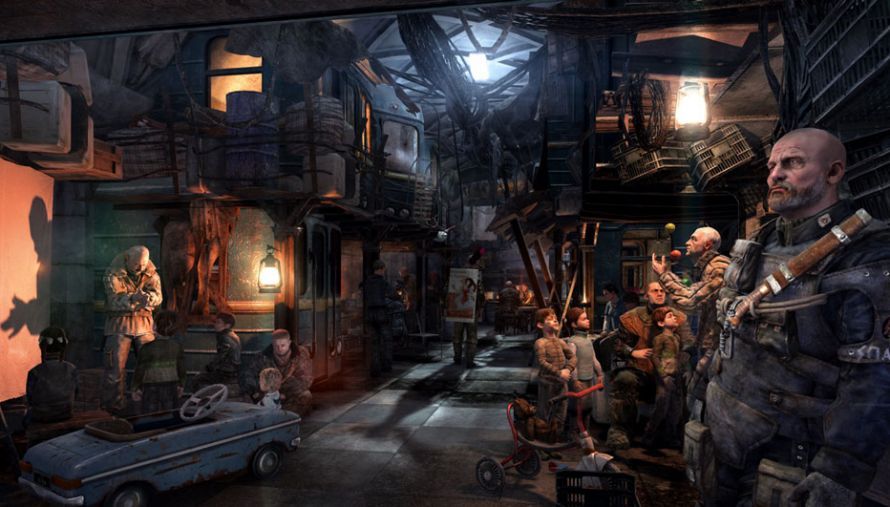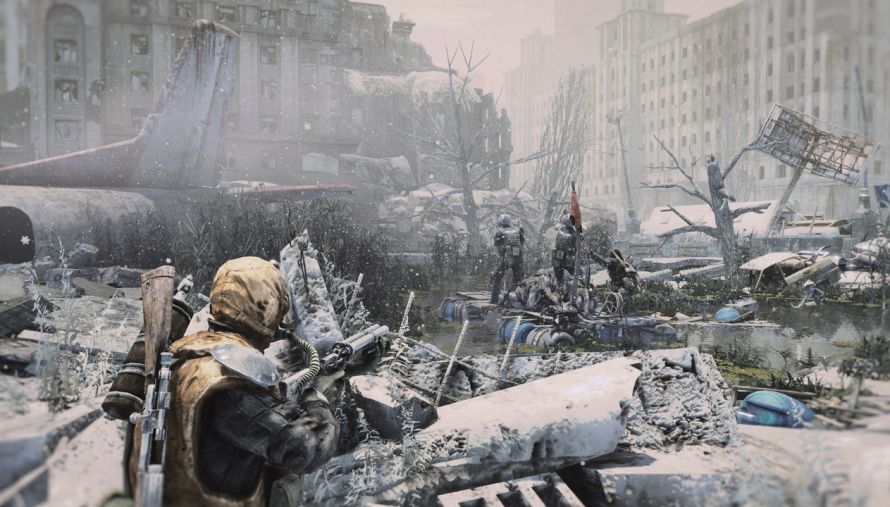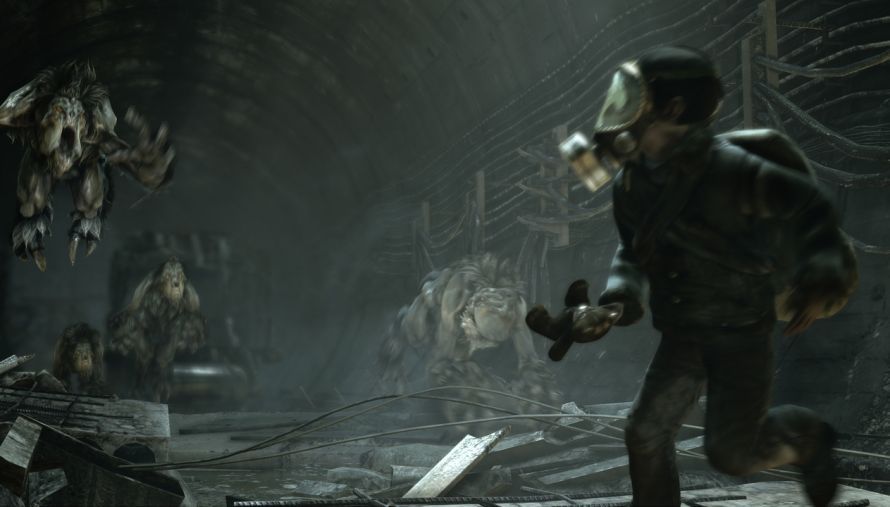The horror genre--when the story being told gets into your head and turns your instincts against you--coupled with the genre of science-fiction, go together like bread and butter; which is the case in 4A Games’ first-person shooter, Metro: Last Light. Rather than stop your heart with predictable shock moments and gore, they push buttons: they force you to think and pull on every single thread of the story. The world of Last Light slowly grows on you, and before you know it, you’ll find yourself looking over your shoulder, and playing with the lights on.
Metro: Last Light takes place roughly one year after its predecessor, 2010’s Metro 2033. Artyom is back as the franchise’s protagonist. Following his decision to lay waste to the Dark Ones at the end of the first game, it is revealed that one of them survived, and it opens the possibility that establishing a dialogue with it could mean the answer to mankind’s salvation. During his journey, Artyom comes into contact with the three major societies that dominate the Metro: communists, the order, and everyone’s favorite, the Nazis. Parts of the game also take place on the war-torn, irradiated surface, which is now dominated by new types of aggressive and predatory life – the same challenges are faced underground, with the added variable of the aforementioned enemy soldiers.
The narrative and setting were very reminiscent of the 1962 short science-fiction film, La Jetee, by Chris Marker, in which Paris is left uninhabitable after the outbreak of a nuclear-fueled World War III (much like Metro: Last Light, Nazis function as the primary antagonists). The world of Last Light is not characterized by violence solely, but by the depravity and hopelessness of the situation that affects all three of the rival factions. One of the game’s strongest points are the moments in which the developers were able to bring the world to life; every group of people you encounter seem real, as they are always engaged in conversations and interactions pertinent to the situation at that time. It nuances like this that serve to make the experience very immersive, even in the absence of a voice from Artyom himself.
While the lack of Artyom’s voice (his only dialogue comes in the form of journal entries that he narrates to fill the story in between chapters) does not make his interactions with other characters any less meaningful or intriguing, it does stifle any true chemistry between them that would have otherwise been unlocked by a back-and-forth dialogue. They simply come across as talking at you, not to you or with you.
The approach to exploration and traversing the levels is mostly linear, however the environments and hazards differ significantly, providing new challenges and preserving that fresh feeling. Most of the game is spent exploring the subway tunnels and sewers of the underground, while the rest is spent on the treacherous surface. This is where the meat of the game lies; in both the exploration and the stealth aspects that come with it. You will have three best friends when you are underground: a silenced weapon, your gas mask (and its filters), and your flashlight.
Darkness is both your enemy and your friend. 4A Games has done a masterful job of turning the game’s environments into characters themselves. Situations will involve contending with either enemy soldiers or the irradiated fauna. The former involves stealth techniques as you are one man versus dozens. In some areas, it is possible to go in guns blazing, but there is higher chance of death and a certain chance of running out of ammo. While planting claymores, knocking out enemies (or slitting their throats), and knocking lights out throwing knives is sometimes a tad more time-consuming, it is ultimately much more fulfilling given its intricacies and complexity.
When you are not fighting (sometimes trolling) humans, you will be fighting off the irradiated monstrous animals that now inhabit the rest of the outside world, and some of the underground. Every time a horde of enemy creatures attacks you, it is preceded by roars and growls that fill every hallway, every crevice of the area that you are in. You will find yourself looking over your shoulder – even in the comfort of your own home. None of these animals go down easy and you will find yourself constantly sticking and moving in order to avoid getting mauled – a fun, interesting contrast to the game’s stealth gameplay.
It is impossible to beat Metro: Last Light by employing a spray-and-pray type of gameplay, as weapons and ammo are hard to come by (military-grade ammo is used as the game’s currency when upgrading weapons and other tools). This is where the meat of the game lies, in planning your attack and being more reactionary than a pseudo-Rambo. The former will most certainly end in your death.
Those looking for a large array of weapons to choose from may be somewhat disappointed, however it is a very practical and realistic selection given the nature of the game. The most common weapons you will be using are pistols, shotguns, and assault rifles. As a person who has played an innumerable amount of first-person shooters, it was easy to designate each weapon with a specific role. Pistols were perfect for stealth kills and taking out lights from long-range (a short-range version of the same situation demanded the use of the even less conspicuous throwing knife). Shotguns and assault rifles were useful for close-quartered kills and crowd control, respectively. I found it most useful to attach a silencer to the pistol, though it should be noted that all weapons can essentially be grafted with the same attachments to accommodate a player’s individual preferences. Metro: Last Light encourages a smart use of all weapons since only a small amount can be scavenged from dead and unconscious soldiers – visits to shop owners are few and far between, and currency is a privilege, not a right.
The varied gameplay between stealthily picking off enemy soldiers and fighting off the now-indigenous life can sometimes serve as a minor detriment to the overall experience. There are varied instances of each, but the overall distraction is that at their core, these are the only two situations that you will encounter as you play through the game. The story and horrific aspects of the world are what drives the game forward, in addition to the occasional exploration of an underground community. The evolving environments, engaging cut scenes, and story make up for what would otherwise be a wholly monotonous experience.
Metro: Last Light is very much driven by its story and 4A Games have crafted a title that can easily suck a gamer in if they are looking for something that is heavy on the politics and nuances of a post-apocalyptic world. In lieu of fast-paced action is a game that rewards patience and curiosity. The game is a labyrinth that when solved the right way can be very satisfying to any person that picks it up and plays it the whole way through. Of games that fall into the realm of science-fiction/horror, this one does most things right, and very little wrong.



